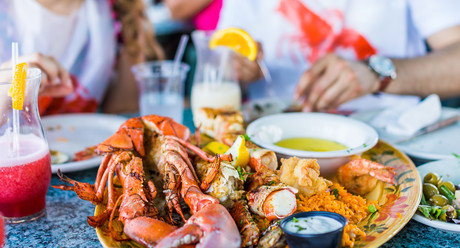Expand CoOL to foodservice says SIA

Sunday, 1 July made Country of Origin Labelling mandatory for all food sold in retail stores across Australia. But Seafood Industry Australia (SIA) is asking “What about foodservice?”.
“The changes to Country of Origin Labelling in retail are excellent as they provide consumers with clear information on where their food comes from, which will allow them to make informed purchasing decisions; but retail is only half of the story,” Seafood Industry Australia CEO Jane Lovell said.
“The new laws don’t apply to food sold in places like restaurants, cafes, pubs, clubs and fish and chip shops. We want to see these labelling laws extended to foodservice.”
At the supermarket and when you buy fresh fish, by law, all seafood has to be labelled with its country of origin. But, when you go out to dine, there is no obligation to label where the seafood you are about to order and eat comes from.
“What SIA can’t understand is what the difference is — the government believes consumers have a right to know where their seafood comes from in retail, why not when they are eating out?” Lovell said.
“Australians love their seafood, and next to freshness, the country of origin is the second most influential factor for consumers choosing which seafood they buy.
“Twenty years ago almost all the seafood Australians ate was Australian seafood. Most assume it still is. But, people are flabbergasted when they find out 70% of seafood eaten in Australia is imported.”
Lovell said they aren’t vilifying imported seafood, but believe consumers should be provided with the same information in foodservice that they have in retail.
“Two Senate inquiries have called for this loophole to be closed. More than 86,000 consumers signed petitions asking for Country of Origin Labelling to become compulsory for seafood sold in the foodservice industry. Yet nothing has changed,” Lovell said.
“The Northern Territory successfully introduced Country of Origin Labelling for cooked and pre-prepared seafood in the foodservice industry in 2008. We want the rest of the country to follow suit.
“What we’d like to see is Australian seafood identified on menus, simple as that. At a minimum we’d like to see something like Australian Barramundi, but businesses can be as specific as they want. For imported seafood a simple ‘i’ to denote it’s imported with a clear explanation of what it means printed somewhere on the menu.
“Australians want to buy Australian products and many are prepared to pay more for Australian seafood,” she said.
“Country of Origin Labelling is already working in some restaurants and cafes in Australia with minimal cost or disruption. The argument that the introduction of Country of Origin Labelling in foodservice would be a huge cost imposition doesn’t wash. SIA welcomes the opportunity to work with the foodservice industry — there are practical low-cost options out there.
“The debate has run long enough — consumers deserve to know where the seafood they eat is from, no matter where they buy it,” concluded Lovell.
Digital labelling trial proposal in NZ for certain imported food
The New Zealand Minister for Food Safety is seeking feedback on a proposal to enable a trial of...
CCEP's reverse vending machine rollout
Coca-Cola Europacific Partners' first RVM has opened in Moorabbin, with others planned across...
Smarter 'natural' packaging for food of the future
From food waste sugars into natural plastic films, researchers at Monash University are creating...











